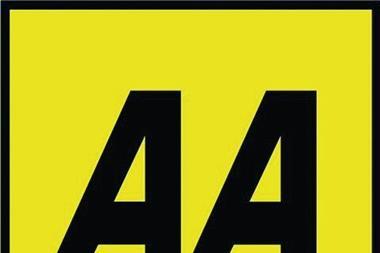As life expectancy rises and equity performance plummets, insurers are seeing their pension pots sucked into a black hole. Can companies overhaul final-salary schemes without incurring the wrath of their employees?
As if the insurance industry didn’t already have enough on its plate, with softening rates, lower product demand, escalating claims and meagre investment returns, it now has another worry to add to the list: pensions deficits.
Companies offering defined benefit, also known as final-salary, schemes are increasingly discovering large and growing holes in their pension pots. Saga, the holding company for AA Insurance and a broker of insurance products to over 50s consumers, revealed in its results for the year to 31 January 2010 that its pension deficit worsened to £193.5m, from £24.4m the previous financial year.
And Saga is by no means alone. Aviva announced in April this year that the combined deficit from its RAC and Aviva pension schemes had widened to £3bn from £1bn in 2006. Rival insurer RSA announced with its full-year 2009 results that its pension scheme had moved from a surplus of £363m at the start of the year to a deficit of £262m at 31 December. The deficit had worsened further to £267m as at 30 June 2010.
According to figures from Aon’s employee benefits and risk management consulting division, UK private sector final-salary liabilities hit an all-time high of £1.2 trillion at the end of August 2010. Total liabilities for the Aon200 Index, which tracks around half of the UK’s private sector pension scheme liabilities, were £608bn in August, but the assets covering them were £97bn short. This compares with a deficit of £74bn at the end of July 2009 and £78bn at the end of August 2009.
Spiral out of control
Pensions deficits relating to final-salary schemes are nothing new for the insurance industry or UK companies as a whole, of course. The fact that people were living longer, and thus drawing on their final-salary schemes for a greater duration than actuaries had previously calculated, has been eroding pension pots for many years.
In addition, some argue that the deficit issue has been exacerbated by the removal of tax relief on dividends paid into pension schemes imposed in 1997 by then chancellor of the Exchequer Gordon Brown.
But the problem has been given a new twist by the meagre investment returns available in the post-financial crisis environment. The assets that back pensions liabilities have historically been heavily weighted in equities, which have generally performed poorly over the past three years compared with historical norms.
“UK equities have struggled to generate returns of more than 1% or 2% each year. You would have been better putting your money in a building society,” one finance director says. “Actuaries performing calculations 10 years ago were probably assuming that equities would return 8% or 9% over that period.”
A greater proportion of pension assets are now in longer-term, less risky investments, such as government bonds, as a result of regulation and de-risking. But these assets have also performed poorly as a result of continuing low interest rates, reducing the asset pool further.
Aon stated that the main cause of increased pension liabilities was the drop in the government bond yield, which is used as the benchmark for measuring the liabilities. “Those schemes that have matched liability exposure by investing a substantial proportion of their assets in government securities and swaps will have protected themselves from the recent deterioration in market conditions, but the large majority of schemes still remain exposed,” Aon said in a statement, adding that market conditions have never been as tough for final-salary pension schemes.
“You have had the perfect storm: people are living longer, investment strategies are a lot more cautious and also you have got the government basically taxing the funds, and as a result of that many firms are struggling,” says Alex Alway, chief executive of broking group Jelf, which also offers employee benefits advice.
Losing the fight
As well as being a financial drain on an already capital-intensive industry, the pensions deficits can affect companies’ competitive positions. Not all companies in the insurance industry have final-salary schemes. Many expect the problem to be confined to the big-name insurers and the largest brokers – in other words, those companies that are large enough to afford such schemes and that have long operating histories.
“Firms that have a defined benefit scheme are at a huge disadvantage because they have a large, unknown liability,” the finance director says.
The deficits can also affect the attractiveness of mergers and acquisitions within the insurance sector. Broking consolidator Towergate, for example, does not run a defined benefits pension scheme itself and will not consider buying companies that do run them. RSA’s recent failed bid for Aviva’s general insurance division specifically excluded the target unit’s pensions liabilities.
And there is no easy way out of the liabilities for these companies. Specialist ventures have been set up that purchase defined benefit liabilities – such as former Prudential chief executive Mark Wood’s Paternoster – but such solutions can be expensive.
Having realised their worth, employees have become more reluctant to relinquish benefits under final-salary schemes. “People are living longer, and they are all the more aware of what opportunities these benefits provide. So there is no chance of buying people out,” Alway says.
Given the growing liabilities and deficits, companies are left with the stark choice of either restructuring their final-salary schemes, for example by requiring greater contributions from employees and capping the benefits available, or closing them to new members.
The parent company of Saga and AA, for example, which has four pension schemes in total – all with a deficit – has restructured its two AA schemes. For the career average scheme, it has increased contributions by 2.5%. For the final-salary scheme, it has offered an option of an increased contribution of 1.5% or 2.5%, and depending on the option the pensionable salary increase is capped at 2.5% or 3%. “The effects of those measures should appear in the accounts published next year,” Saga spokesman Paul Green says.
In April, Aviva proposed the closure of its final-salary scheme and shifting the staff on the scheme to money purchase arrangements from 1 April 2011. The consultation process with trustees and representative bodies began in June and will run until the end of September. The company will then brief its employees on the outcome. Aviva declined to give a progress update while the consultation was still running.
In February, RSA announced a raft of changes to its defined benefit schemes, which included increasing the level of exiting employee contributions, reducing the cap on pensionable earnings to £75,000, and raising the schemes’ retirement age to 65 from 62.
In April last year, Aon announced plans to cut its contributions to employees’ pension schemes. Aon declined to comment on the effectiveness of the change.
Employees revolt
In taking these decisions, however, insurers run the risk of incurring the wrath of employees, unions and trustees. Saga employees’ union, Independent Democratic Union, threatened strike action over the company’s pension scheme overhaul. Aviva employees’ union, Unite, reacted angrily to the company’s April proposals, saying they betrayed the employees who had built up the group.
The problem looks unlikely to go away any time soon, and more companies with final-salary schemes may be forced to take action. While there may be pushback from unions and trustees, defined benefit final-salary schemes are likely to continue to close as companies within and outside the industry struggle to grapple with the deficits.
“I certainly think we will get to the place where all defined benefit schemes are closed,” the finance director says. “We have almost got to the stage where there are so many schemes being shut that it doesn’t get reported any more because it is no longer remarkable.”
But there are encouraging signs, too. While negotiating changes to pension schemes is tough and an angry backlash is almost guaranteed, employees, trustees and unions can be won over. While a strike was threatened at AA, it did not materialise. “We eventually concluded a deal that both sides think is fair and equitable, and was also voted upon by AA staff and approved by them as well,” Green says. “It is in everyone’s interest that we have an affordable, sustainable and open pension scheme.”
While closing or restructuring final-salary schemes is unpalatable for many, it is better than the alternative. “The last thing the members want to happen is the company to go bust, because then there will be no contributions at all in the future,” the finance director says. “It is about striking a balance.” IT
Hosted by comedian and actor Tom Allen, 34 Gold, 23 Silver and 22 Bronze awards were handed out across an amazing 34 categories recognising brilliance and innovation right across the breadth of UK general insurance.














































No comments yet